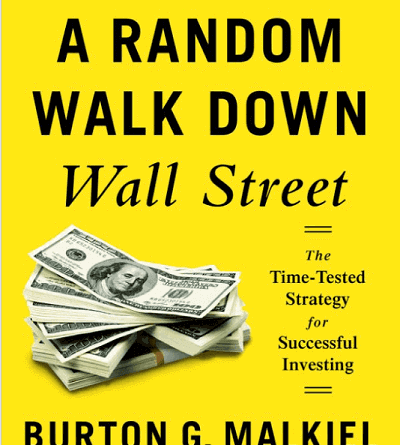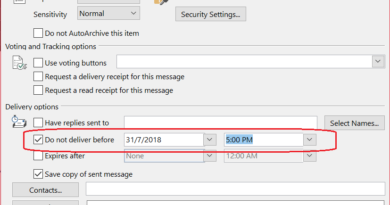Interesting book to read: A Random Walk Down Wall Street: The Time-Tested Strategy for Successful Investing
A Random Walk Down Wall Street: The Time-Tested Strategy for Successful Investing is written by Burton G. Malkiel, first published back in 1973 and now it’s in 12th edition of the book (published back in 2019) with updated data and samples. Malkiel in his book, shared the time-tested strategy that he suggested back in his first edition of the book which still applicable in the present day, hence proven as time-tested. He shared also the common pitfalls that happen to investors from as early as year 1500-ish which still happening today and shared many of his experiences and findings in investing world together with real examples.
This book is good for whomever looking for investing advices, techniques and recommendations, be it long-time seasoned or beginner investors. For beginner who has just started investing or about to start your investing journey, this book is extremely good because it gives so many lessons which if you read them carefully, you may avoid pitfalls in investing jungle and learn investing techniques that generates real good returns. For long time and seasoned investors, you can get the recommendation on how to reduce risk while at the same time maximizing returns.
Book Summary: A Random Walk Down Wall Street: The Time-Tested Strategy for Successful Investing
I’m reading the 11th version of the book and summarizing based on the 11th edition of the book. In this book, Malkiel shared multiple investing techniques from as early as year 1500! Malkiel not only shared the investing techniques available from those years, but also share their pitfalls. For those unfortunate investors who are aiming for get-rich-quick scheme, the pitfall that was happening back in 1500-ish is still happening today in modern day of investing.
2 main investing principles
Malkiel shared that in theory, there are these 2 main investing principles:
1) Firm foundation theory: In short, this is the complicated one. To decide where to invest your money into, you need to know the firm foundation to ensure it’s a good company and not just another company. One of the people who are using this principle is Warren Buffet.
2) Castle in the air theory: In short, this is the easy one and widely used by retail investors like yourself and myself, where to be successful in investing, you have to spot the potentially good stock and buy them at the earliest possible, hoping there will be someone else who will buy the stocks from you at higher prices.
The 2nd investing principle was the commonly used technique back in year 1500-ish which until present day today, it’s still actively used and still producing victims: fools in optimist time who think that stock price will always rocket to the moon and never going down back to earth, hence with just some hot tips and chit-chatting with peers, they jump right in to buy the stocks and many find themselves are the last one to buy before market start going back to earth!
3 investing techniques
While in the book Malkiel shared so many investing techniques and their pros and cons, but in summary, there are 3 techniques that you can use today:
Technique #1) No brainer: Invest in Index funds or ETFs tracking indexes.
Technique #2) DIY – Do It Yourself: To choose your own stocks or bonds.
Technique #3) Help of advisor: Get someone – professional – to do it for you.
If you choose 1st technique: No brainer
Malkiel suggested that this technique should be your core portfolio. He (Malkiel) then suggested no-load, minimum-management-fee fund that simply has the hundred of stocks making up the broad stock market averages and does no trading from security to security. No trading means no fees involves.
If you choose the 2nd technique: DIY
Malkiel sugested that only use this technique if you have something extra to spend after invest in your core portfolio or when you are sure the company picked is growing steadily and not just another castle-in-the-air companies / stories.
Malkiel shared one important lesson for DIY investors. To avoid IPO (Initial Public Offering), especially if you buy just after it begins trading at prices higher than the IPO price, the poor performance typically starts about six months after the issue is sold – 6 months is the period typically set as the lock up period where insiders are prohibited from selling stock to the public. Once the constraint is lifted, then price of the stock often tanks.
If you choose the 3rd technique: Help of Advisor
Malkiel doesn’t really suggest this option, because investing is fun, but in case you really prefer someone else doing it for you, Malkiel suggested 1) to find advisor who is a “fee only” adviser, one that does not get paid for selling investment products and 2) to get a discounted closed-end funds, rather than normal open-end funds.
Malkiel’s Life-Cycle Invesment Guide
Whichever investment principles and techniques you are using, you can use this life-cycle investment guide that Malkiel shared in the book, the proportion where you should allocate your funds into, depending on where you are in the age bracket.
If your age is 20-ish: This is where you are fast and aggressive, able to accept and swallow high risk portfolio. This is the suggested proportion:
| Stocks 70% | Real Estate: 10% |
| Bonds 15% | Cash 5% |
If your age is 30-40-ish: This is where you are more or less settled, perhaps married and have kids, however you are still able to accept and swallow risky portfolio. This is the suggested proportion:
| Stocks 65% | Real Estate: 10% |
| Bonds 20% | Cash 5% |
If your age is 50-ish: This is where you have to start thinking your retirement and the need for income protection. This is the suggested proportion:
| Stocks 55% | Real Estate: 12.5% |
| Bonds 27.5% | Cash 5% |
If your age is 60-ish and beyond: This is where you should enjoy any leisure activities while at the same time, you still need to protect your asset so that it won’t outlive you. This is the suggested proportion:
| Stocks 40% | Real Estate: 15% |
| Bonds 35% | Cash 10% |
In the end, Malkiel shared what he called as “address book”, containing recommended local and international index funds, ETFs, taxable and tax-exempt money market funds, REITS and Bonds funds and ETFs which you can use as reference for your consideration in your investing journey.
Book Review on why I read this book & you should read this too
I came to know A Random Walk Down Wall Street from Tony Robbin’s Money Master The Game book. Tony in his book mentioned about Malkiel and his allocation strategy which then sparked curiosity inside me to find out more about Malkiel and his strategy which part of my pursue of knowing and learning more about everything investing.
I can say and recommend myself that Malkiel’s book is worth reading because as I summarized above, there are so many methods and their pitfalls that he shared and explained inside his book which to me personally is very useful to know them so that there will be lesser chances for me to get into the same pitfalls like many others had been into and I came to learn new things and tricks in investing – which I have not got these from anywhere else, such as 1) castle-in-the-air principle and the reason why so many people still get trapped on them, 2) avoid buying IPO – not before the insider lockup period expired, 3) asset allocation strategy for my age bracket and 4) perhaps the most important is the “address book” he shared which basically his recommendation of many stocks, bonds, money market funds, REITS and many more.
Where you can get & read A Random Walk Down Wall Street: The Time-Tested Strategy for Successful Investing
In case you are also interested with this book, here’s where you can get the book.
1) Amazon
Audiobook (FREE with Audible trial):

Alternative link in case you can’t see the link above: A Random Walk Down Wall Street: The Time Tested Strategy for Successful Investing (Audiobook).
Ebook:

Alternative link in case you can’t see the link above: A Random Walk Down Wall Street: The Time-Tested Strategy for Successful Investing (ebook).
Physical book (Hardcover):

Alternative link in case you can’t see the link above: A Random Walk down Wall Street: The Time-tested Strategy for Successful Investing (Hardcover).
Physical book (Paperback):

Alternative link in case you can’t see the link above: A Random Walk down Wall Street: The Time-tested Strategy for Successful Investing (Paperback).
If you are getting the digital copy, here’s where you can read the book:
| Android | Kindle app for Android |
| iOS | Kindle app for iOS |
| Kindle | Kindle tablet on Amazon |
| macOS | Kindle app for macOS |
| Windows | Kindle app for Windows |
Note: If you buy anything from Amazon using any of the links above, I shall earn a small commission at no extra cost charged on your purchases.
2) Local library
Head to your local library or log in to your local library app to find and rent this book.
Here’s the book ISBN number to help you search the book in library.
| ISBN-10 | 1324002182 |
| ISBN-13 | 978-1324002185 |
Do you have anything you want me to cover on my next article? Write them down on the comment section down below.
Alternatively, find more interesting topics on JILAXZONE:
JILAXZONE – Jon’s Interesting Life & Amazing eXperience ZONE.
Hi, thanks for reading my curated article. Since you are here and if you find this article is good and helping you in anyway, help me to spread the words by sharing this article to your family, friends, acquaintances so the benefits do not just stop at you, they will also get the same goodness and benefit from it.
Or if you wish, you can also buy me a coffee:

Thank you!
Live to Share. Share to Live. This blog is my life-long term project, for me to share my experiences and knowledge to the world which hopefully can be fruitful to those who read them and in the end hoping to become my life-long (passive) income.
My apologies. If you see ads appearing on this site and getting annoyed or disturb by them. As much as I want to share everything for free, unfortunately the domain and hosting used to host all these articles are not free. That’s the reason I need the ads running to offset the cost. While I won’t force you to see the ads, but it will be great and helpful if you are willing to turn off the ad-blocker while seeing this site.




